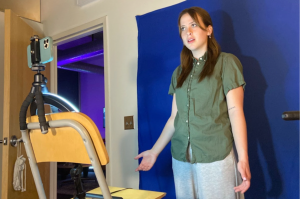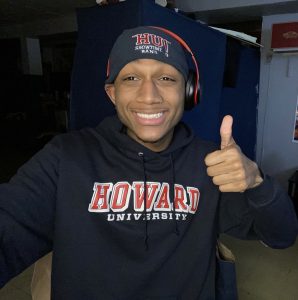
College enrollment is declining, and the rise in college tuition has many people wondering if college is worth the price.
The number of students enrolled in colleges and universities fell by nearly half a million after two decades of substantial growth, according to the U.S. Census Bureau.
“I always had the intentions of going to college or a university, but it just didn’t happen,” said Hajera Yasin, 23, a part-time nanny. “At the end I just didn’t have enough money to go. Financial aid was not enough to cover it, and my parents don’t have that kind of money.”
Over the past decade from 2002-03 to 2012-13, tuition and fees at public four-year institutions rose at an average rate of 5.2 percent per year, meanwhile, room and board charges increased by 2.6 percent per year.
“When I graduated from high school, I wanted to save up some money and work more hours. But every time I try to register I just don’t have enough money and every year it seems like the tuition keeps going up and me going to college keeps getting postponed,” said Yasin.
For the 2010–11 academic year, annual current dollar prices for undergraduate tuition were estimated to be $13,600 at public institutions, $36,300 at private not-for-profit institutions, and $23,500 at private for-profit institutions.
“When I graduated from high school in 2008 it was common for people to go to the college of their choice. Nowadays people are doing their first two years at a local community college,” said Yasin.
Between 2000–01 and 2010–11, prices for undergraduate tuition at public institutions rose 42 percent, and prices at private not-for-profit institutions rose 31 percent.
“I am taking one class this semester because financial aid can technically cover one class,” said Hollis Mckneel, 28, a part-time student at Columbia College Chicago. “It’s very exhausting to take only one class a semester because I just want to be finished with school already.”
Between 2004-2012 the number of part-time students has risen to 26 percent. The increase is mainly due to students working full to part time, to pay for their college tuition.
“I have been attending Columbia College for two years and have two more years to complete. If I could afford to take more classes I would have graduated by now,” said Mckneel.
In 2005, more than 2 million community college students received federal Pell grants. However, in recent years, there has been a shift in government policies away from grants toward student loans.
“My parents advised me to take out student loans so I can go to school but the idea of paying back thousands of dollars is a scary thought,” said Yasin.
The College Board report showed that for a family in the second highest of incomes, the net cost of sending a student to a private college rose almost 8 percent from 2003-4 to 2011-12.
“I see many of the students that I started off with already graduate, and I am still here. Many of these students who can afford it come from a high income family,” said Mckneel.
Some college administrators worry that colleges may be approaching a breaking point in their ability to keep raising prices.
Many public/private colleges feel threatened by the rise of inexpensive online courses and degree programs. Meanwhile, the college-age population is falling.
“College tuition is way too high; many people will be facing debt or limited options,” said Janeth Romero, a former temp at a student financial aid office. “I used to see many students behind on payments or playing catch up.”
A recent report released by the Census Bureau found a sharp decline in college enrollment rates from 2011 to 2012 of 467,000 students, a 2 percent dip, due to the rise in college tuition.
“There are many reasons why people no longer find attending college important, but the main reason is because people do not want to be forced into debt,” said Romero.
Four-year college enrollment decreased by 5 percent from 2012; black and Hispanic enrollment had the most significant decreases at 10 percent and 11 percent respectively, while Caucasian enrollment rose by nearly one-fifth — 19 percent — from 2011 to 2012.
“I think minorities and low-income families are the ones who are at a disadvantage. Not only is tuition high but college applications as well as ACT and SAT — that does not come cheap,” said Romero.
Between 2011-2012 there has been an 11 percent decrease in the number of American students pursuing master’s and professional programs. This is tied to tuition and the job market.
“I would like to purse a master’s degree and further my education, but I just can’t afford it right now,” said Tizta Memo, 23, a graduate of Northern Illinois University. “I am trying to pay off my current loans; I don’t want to jump into another set of loans.”
Nearly three quarters of master’s students have racked up an average debt of more than $41,000 over both undergraduate and graduate school.
“Receiving my bachelor’s degree was already expensive. I piled up about $19,000 and going to college does not guarantee you a job. I think that goes for a master’s degree; you are not guaranteed a job,” said Memo.
Some people are optimistic that college enrollment will rise again.
“There are many resources that students and people can utilize to pay for tuition,” says Natasha Johnson, 36, a former admissions officer at Devry University. “Even college is more expensive now than 15 years ago. People need to take advantage of various scholarship opportunities online.
“Times have changed. You don’t have to attend a traditional four-year college. There are other opportunities such as online college [courses] or two-year programs,” said Johnson.












Be First to Comment